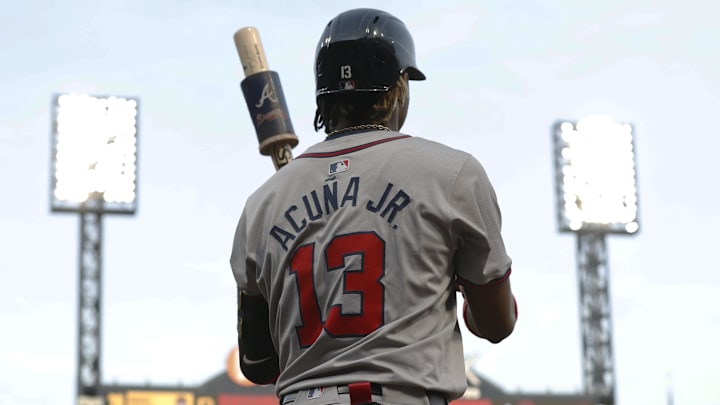Atlanta Braves fans held their breath and hoped for the best when Ronald Acuña Jr. went down on Sunday. Unfortunately, their worst fears were realized when the team announced that he’d torn the ACL in his left knee.
Acuña will miss the remainder of this season and most – probably all – of the 2025 season as well. Initially, the club is looking to internal options to fill the roster spot, promoting J.P Martinez as their fourth outfielder. However, it’s likely a better option is needed.
In 2021, Atlanta Braves GM Alex Anthopoulos pulled a rabbit – make that three rabbits – out of his hat after the injury that ended the season for Ronald Acuña Jr. If he decides to make a trade this year, these players could be targets.
In-house options to replace Ronald Acuña Jr.
Adam Duvall is 35, and injuries restricted him to 86 games in 2022 and 92 games in 2023. Despite his reputation as a lefty-masher, over the past three seasons, he batted only .212/.270/.444/.715 and struck out in 33.5% of his PA.
Jarred Kelenic’s been a stud defender since his arrival but historically struggles against lefties. It seems the Braves may be ready to send Marcell Ozuna out to play left field and use one of their catchers as DH. That’s not ideal. So, who might the Braves look at, and what would it cost?
